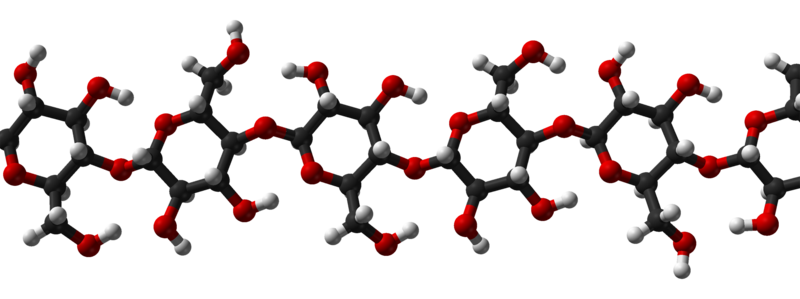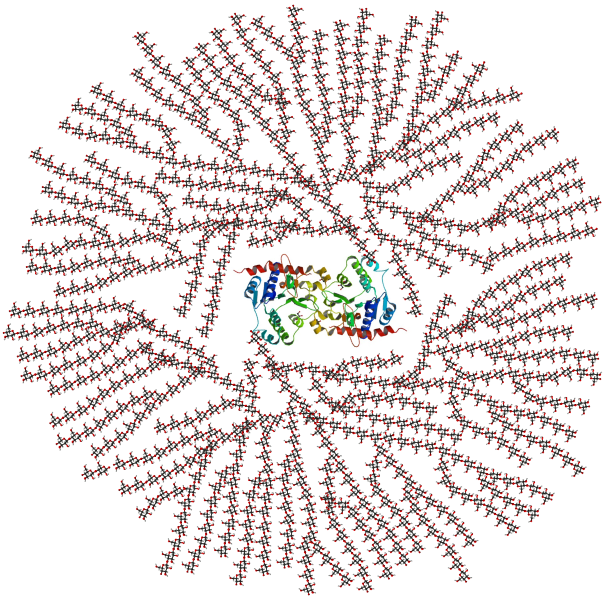polysaccharides

Polysaccharides are long carbohydrate molecules of repeated monomer units joined together by glycosidic bonds. They range in structure from linear to highly branched. Polysaccharides are often quite heterogeneous, containing slight modifications of the repeating unit. Depending on the structure, these macromolecules can have distinct properties from their monosaccharide building blocks. They may be amorphous or even insoluble in water.
When all the monosaccharides in a polysaccharide are the same type, the polysaccharide is called a homopolysaccharide or homoglycan, but when more than one type of monosaccharide is present they are called heteropolysaccharides or heteroglycans.
Examples include storage polysaccharides such as starch and glycogen, and structural polysaccharides such as cellulose and chitin.
Polysaccharides have a general formula of Cn(H2O)n-1.
























